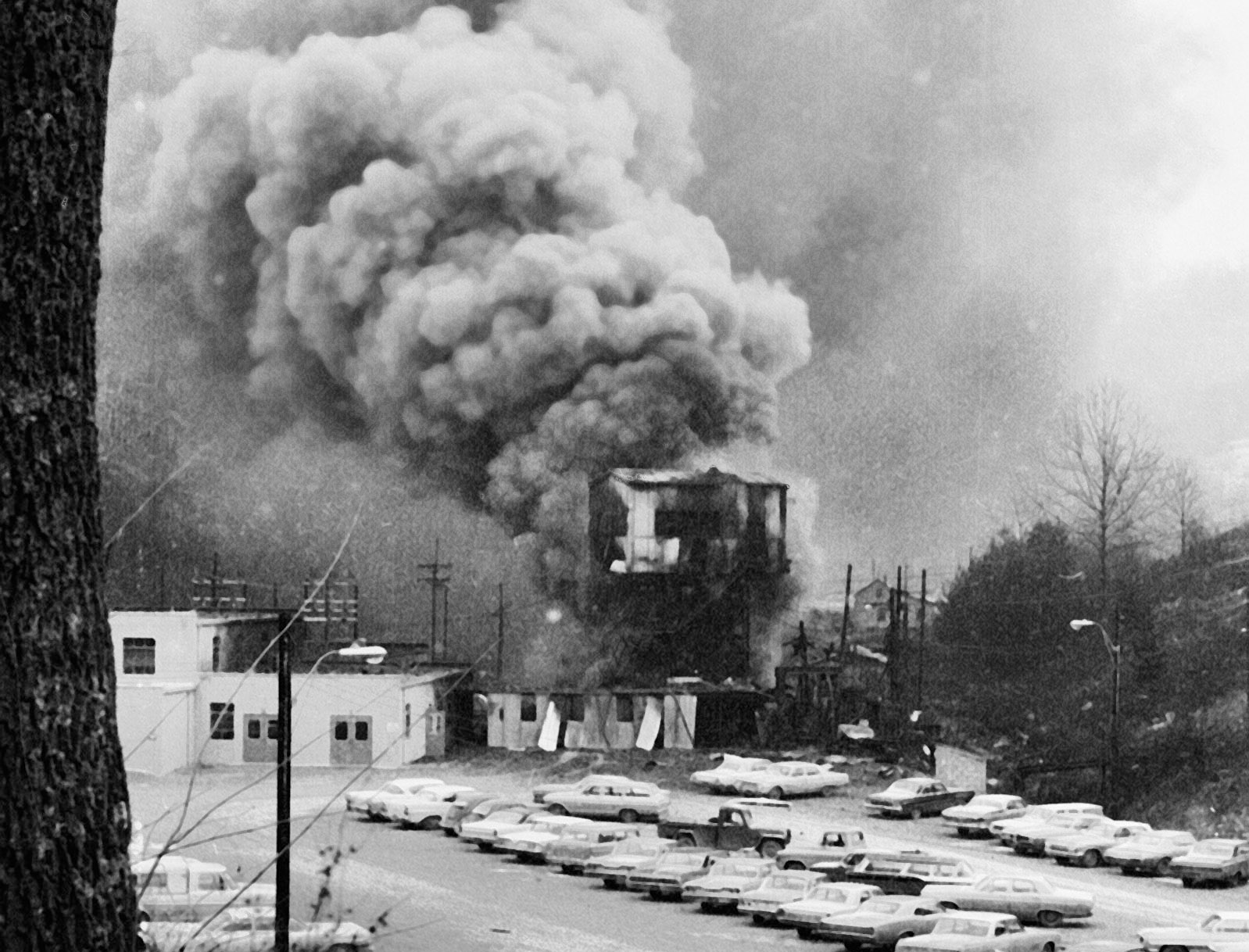Families Hoping for Justice in Suit Over 1968 Mine Disaster

May 8, 2018 - Nearly half a century after an explosion tore through the Farmington No. 9 mine in West Virginia, the families of the 78 men who died there are still looking for justice.
Many of the children of the lost miners are now grandparents and older than their fathers ever were. Some have given up hope of ever holding anyone accountable for the disaster. But others are looking to a federal appeals court for some measure of closure.

The Consolidation No.9 Mine exploded on Nov. 20, 1968, sending clouds of smoke into the winter air.
Photo by Larry Pierce, The Times West Virginian
On Wednesday, the families will ask the 4th U.S. Circuit Court of Appeals to reinstate a lawsuit they filed in 2014. A judge ruled the lawsuit was filed too late, but the families argue that the case should be allowed to move forward because they claim the mining company concealed the cause of the explosion for decades.
James Matish, then 14, remembers saying goodbye to his father, Frank, the same way he always did before his Dad left to work the "cateye shift" — midnight to 8 a.m. — on Nov. 20, 1968: "So long, Dad, don't work too hard and be careful."
Matish remembers his father's reply — "See you tomorrow" — and then, the next day at school, being called out of class and seeing his mother standing in the hallway crying.
Five decades later, Matish is a 64-year-old Circuit Court judge whose voice still catches in his throat when he talks about his father.
"It's something that's never ended," he said. "There's always a question — at least in my mind — how long were they able to survive, whether they were killed outright — those are questions that will never be answered."
The families say they tried for years to find out what caused the explosion and whether the mining company, Consolidation Coal, was responsible. They accuse the company of fraudulently concealing key information that would have allowed them to file a wrongful death lawsuit years earlier.
Last year, a federal judge threw out their 2014 lawsuit, saying the "suit, brought forty-six years after the explosion, is late by more than forty-four years."
According to the lawsuit, it was not until 2008 when the families learned about a 1970 memo by an investigator who wrote that an alarm on a ventilation fan used to flush explosive methane gas from the mine was disabled the night of the explosion. The alarm was supposed to shut off power to the mine if the fan stopped, which would alert the miners to evacuate.
The suit says it wasn't until 2014 when the families learned that the mine's chief electrician had disabled the fan. It alleges that the company had concealed the electrician's identity.
"Our position is that but for the fraudulent concealment of the facts, these folks could have filed and had a successful wrongful-death case," said Timothy Bailey, a West Virginia lawyer who represents the families.
Bailey argues that the two-year limitation period on wrongful-death cases should be extended based on the families' claims.
In court documents, lawyers for the mining company say problems with the mine's ventilation fans became public knowledge a month after the explosion when multiple witnesses testified during public hearings that despite the alarm system, power to some areas of the mine sometimes did not automatically shut down as it was designed to do.
In 2013, the mining company sold five of its mines and its transportation division to Murray Energy Corp., which assumed certain liabilities from the former Consolidation operations, including the No. 9 mine.
A spokesman for Murray Energy declined to comment on the specific claims made in the lawsuit but released a statement.
CoalZoom.com - Your Foremost Source for Coal News

